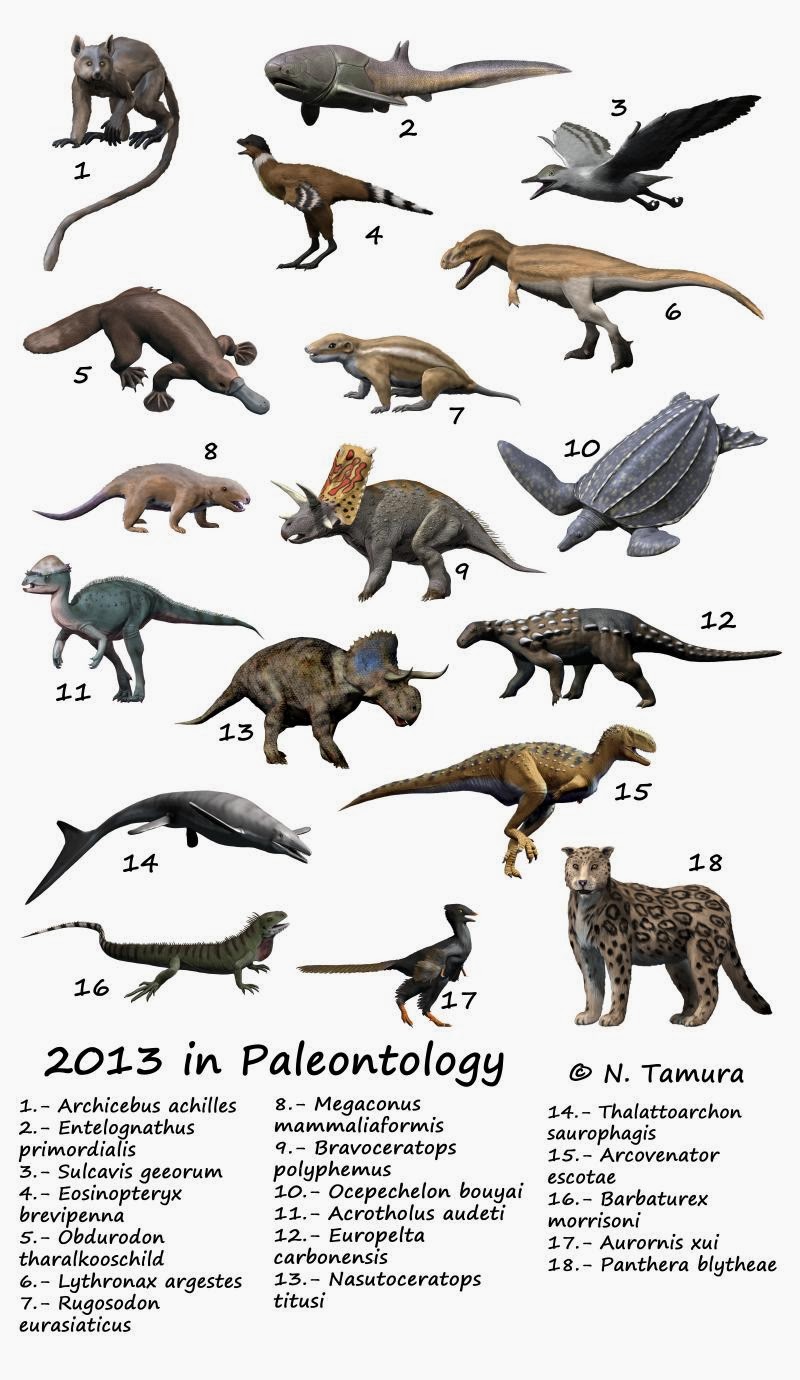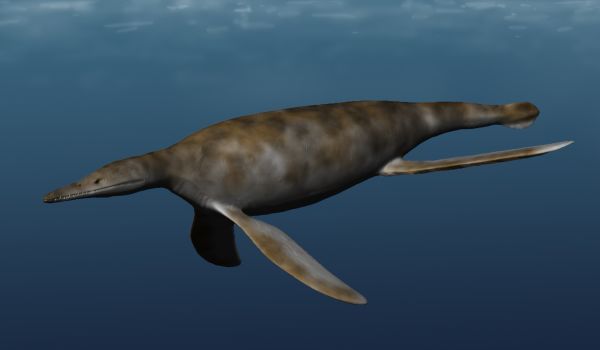|
Suzanniwana
''Suzanniwana'' is an extinct genus of iguanian lizards that lived in western North America during the earliest Eocene, approximately 56 million years ago. Two species are known from the Bighorn Basin of Wyoming: the type species ''S. patriciana'' named in 2009, and the species ''S. revenanta'' named in 2013. ''Suzanniwana'' lived during the Paleocene–Eocene Thermal Maximum, a brief period of global warming that resulted in warmer and drier conditions in the Bighorn Basin. It likely stemmed from a lineage that had migrated into the basin from regions farther to the south, following a latitudinal band of constant climatic conditions that moved northward as the planet warmed (a phenomenon known as habitat tracking). ''Suzanniwana'' shares many skeletal features with modern casquehead lizards of the family Corytophanidae and may be a stem-corytophanid. It also closely resembles ''Geiseltaliellus'', an iguanian from the middle Eocene Messel pit The Messel pit (german: Grube Messe ... [...More Info...] [...Related Items...] OR: [Wikipedia] [Google] [Baidu] |
2013 In Paleontology
Plants Cnidarians Arthropods Bryozoans Brachiopods Molluscs Echinoderms Conodonts Fishes Amphibians Research * Laloy ''et al.'' (2013) reinterpret the Eocene frog species ''Rana cadurcorum'' from the Quercy Phosphorites (France) as a junior synonym of '' Thaumastosaurus gezei''. Newly named temnospondyls Newly named lepospondyls Newly named lissamphibians Turtles Research * A study on the anatomy of the brain and inner ear of the Jurassic turtle ''Plesiochelys etalloni'' is published by Paulina Carabajal ''et al.'' (2013). Newly named turtles Thalattosaurs Ichthyopterygians Lepidosauromorphs Newly named sauropterygians Newly named rhynchocephalians Newly named lizards Newly named snakes Archosauromorphs Newly named basal archosauromorphs Archosaurs Other reptiles Synapsids Non-mammalian synapsids Research * The postcranial skeleton of therocephalian ''Ictidosuchoides'' is described by Heidi Fourie (2013). New taxa ... [...More Info...] [...Related Items...] OR: [Wikipedia] [Google] [Baidu] |
Eocene
The Eocene ( ) Epoch is a geological epoch that lasted from about 56 to 33.9 million years ago (mya). It is the second epoch of the Paleogene Period in the modern Cenozoic Era. The name ''Eocene'' comes from the Ancient Greek (''ēṓs'', " dawn") and (''kainós'', "new") and refers to the "dawn" of modern ('new') fauna that appeared during the epoch. The Eocene spans the time from the end of the Paleocene Epoch to the beginning of the Oligocene Epoch. The start of the Eocene is marked by a brief period in which the concentration of the carbon isotope 13C in the atmosphere was exceptionally low in comparison with the more common isotope 12C. The end is set at a major extinction event called the ''Grande Coupure'' (the "Great Break" in continuity) or the Eocene–Oligocene extinction event, which may be related to the impact of one or more large bolides in Siberia and in what is now Chesapeake Bay. As with other geologic periods, the strata that define the start and e ... [...More Info...] [...Related Items...] OR: [Wikipedia] [Google] [Baidu] |
Adaptation
In biology, adaptation has three related meanings. Firstly, it is the dynamic evolutionary process of natural selection that fits organisms to their environment, enhancing their evolutionary fitness. Secondly, it is a state reached by the population during that process. Thirdly, it is a phenotypic trait or adaptive trait, with a functional role in each individual organism, that is maintained and has evolved through natural selection. Historically, adaptation has been described from the time of the ancient Greek philosophers such as Empedocles and Aristotle. In 18th and 19th century natural theology, adaptation was taken as evidence for the existence of a deity. Charles Darwin proposed instead that it was explained by natural selection. Adaptation is related to biological fitness, which governs the rate of evolution as measured by change in allele frequencies. Often, two or more species co-adapt and co-evolve as they develop adaptations that interlock with those of th ... [...More Info...] [...Related Items...] OR: [Wikipedia] [Google] [Baidu] |
Eocene Lepidosaurs
The Eocene ( ) Epoch is a geological epoch that lasted from about 56 to 33.9 million years ago (mya). It is the second epoch of the Paleogene Period in the modern Cenozoic Era. The name ''Eocene'' comes from the Ancient Greek (''ēṓs'', "dawn") and (''kainós'', "new") and refers to the "dawn" of modern ('new') fauna that appeared during the epoch. The Eocene spans the time from the end of the Paleocene Epoch to the beginning of the Oligocene Epoch. The start of the Eocene is marked by a brief period in which the concentration of the carbon isotope 13C in the atmosphere was exceptionally low in comparison with the more common isotope 12C. The end is set at a major extinction event called the ''Grande Coupure'' (the "Great Break" in continuity) or the Eocene–Oligocene extinction event, which may be related to the impact of one or more large bolides in Siberia and in what is now Chesapeake Bay. As with other geologic periods, the strata that define the start and end of th ... [...More Info...] [...Related Items...] OR: [Wikipedia] [Google] [Baidu] |
Messel Pit
The Messel pit (german: Grube Messel) is a disused quarry near the village of Messel (Landkreis Darmstadt-Dieburg, Hesse) about southeast of Frankfurt am Main, Germany. Bituminous shale was mined there. Because of its abundance of well-preserved fossils dating from the middle of the Eocene, it has significant geological and scientific importance. Over 1000 species of plants and animals have been found at the site. After almost becoming a landfill, strong local resistance eventually stopped these plans and the Messel Pit was declared a UNESCO World Heritage Site on 9 December 1995. Significant scientific discoveries about the early evolution of mammals and birds are still being made at the Messel Pit, and the site has increasingly become a tourist site as well. History Brown coal and later oil shale was actively mined from 1859. The pit first became known for its wealth of fossils around 1900, but serious scientific excavation only started around the 1970s, when falling oil ... [...More Info...] [...Related Items...] OR: [Wikipedia] [Google] [Baidu] |
Geiseltaliellus
''Geiseltaliellus'' is an extinct genus of iguanian lizards that lived in what is now western Europe during the Eocene. It belongs to the family Corytophanidae, which includes modern casquehead lizards. Many fossils are known from Germany, France, and Belgium, with the most well preserved coming from the Messel pit lagerstätte in Messel, Germany. German paleontologist Oskar Kuhn named the genus in 1944 after the Geiseltal valley where the first specimens were found, designating the type species ''Geiseltaliellus longicaudus''. Three new species — ''G. louisi'', ''G. lamandini'', and ''G. grisolli'' — were named in the 1990s and 2000s on the basis of more fragmentary remains from France and Belgium, although ''G. louisi'' has since been synonymized with ''G. longicaudus''. In 2009 the Messel pit specimens were recognized as belonging to a species distinct from that of the ''G. longicaudus'' specimens in Geiseltalt and were collectively reclassified under a new name, ''G. maariu ... [...More Info...] [...Related Items...] OR: [Wikipedia] [Google] [Baidu] |
Stem Group
In phylogenetics, the crown group or crown assemblage is a collection of species composed of the living representatives of the collection, the most recent common ancestor of the collection, and all descendants of the most recent common ancestor. It is thus a way of defining a clade, a group consisting of a species and all its extant or extinct descendants. For example, Neornithes (birds) can be defined as a crown group, which includes the most recent common ancestor of all modern birds, and all of its extant or extinct descendants. The concept was developed by Willi Hennig, the formulator of phylogenetic systematics, as a way of classifying living organisms relative to their extinct relatives in his "Die Stammesgeschichte der Insekten", and the "crown" and "stem" group terminology was coined by R. P. S. Jefferies in 1979. Though formulated in the 1970s, the term was not commonly used until its reintroduction in 2000 by Graham Budd and Sören Jensen. Contents of the cro ... [...More Info...] [...Related Items...] OR: [Wikipedia] [Google] [Baidu] |
Corytophanidae
Corytophanidae is a family of iguanian lizards, also called casquehead lizards or helmeted lizards, endemic to the New World. Nine species of casquehead lizards from three genera are recognized. Geographic range Corytophanids are found from Mexico, through Central America, and as far south as Ecuador. Certain species are now extant in South Florida and are considered invasive. Description The casquehead lizards are moderately sized lizards, with laterally compressed bodies, and typically have well-developed head crests in the shape of a casque helmet. This crest is a sexually dimorphic characteristic in males of ''Basiliscus'', but is present in both sexes of ''Corytophanes'' and ''Laemanctus''.Pough et al. (2003). In past years there has been evidence of corytophanids in the Eocene of North America. The greatest percentage of omnivorous species (> 10% plant diet), over 30% in each, and the highest mean percentage of plant matter in the diet are corytophanids. Behavior In ''C ... [...More Info...] [...Related Items...] OR: [Wikipedia] [Google] [Baidu] |
Paleocene–Eocene Thermal Maximum
The Paleocene–Eocene thermal maximum (PETM), alternatively (ETM1), and formerly known as the "Initial Eocene" or "", was a time period with a more than 5–8 °C global average temperature rise across the event. This climate event occurred at the time boundary of the Paleocene and Eocene geological epochs. The exact age and duration of the event is uncertain but it is estimated to have occurred around 55.5 million years ago. The associated period of massive carbon release into the atmosphere has been estimated to have lasted from 20,000 to 50,000 years. The entire warm period lasted for about 200,000 years. Global temperatures increased by 5–8 °C. The onset of the Paleocene–Eocene thermal maximum has been linked to volcanism and uplift associated with the North Atlantic Igneous Province, causing extreme changes in Earth's carbon cycle and a significant temperature rise. The period is marked by a prominent negative excursion in carbon stable isotope () r ... [...More Info...] [...Related Items...] OR: [Wikipedia] [Google] [Baidu] |
Global Warming
In common usage, climate change describes global warming—the ongoing increase in global average temperature—and its effects on Earth's climate system. Climate variability and change, Climate change in a broader sense also includes previous long-term changes to Earth's climate. The Instrumental temperature record, current rise in global average temperature is more rapid than previous changes, and is Scientific consensus on climate change, primarily caused by humans burning fossil fuels. Fossil fuel use, deforestation, and some Greenhouse gas emissions from agriculture, agricultural and Environmental impact of concrete, industrial practices Greenhouse gas emissions, increase greenhouse gases, notably carbon dioxide and Methane emissions, methane. Greenhouse gases greenhouse effect, absorb some of the heat that the Earth radiates after it warms from sunlight. Larger amounts of these gases Earth's Energy Imbalance, trap more heat in Earth's lower atmosphere, causing glob ... [...More Info...] [...Related Items...] OR: [Wikipedia] [Google] [Baidu] |
2009 In Paleontology
Arthropods Cephalopods Three new species of extinct Octopoda discovered in 2009. The species – '' Keuppia hyperbolaris'', ''Keuppia levante'', and ''Styletoctopus annae'' – lived about 95 million years ago, and bear a strong resemblance to modern octopuses, suggesting that the Octopoda order has remained relatively unchanged for tens of millions of years. The fossils included evidence of arms, muscles, rows of suckers, ink, and internal gills. The discovery was made by a team led by Dirk Fuchs of the Freie University, which is located at Berlin, Germany.Rare fossil octopuses found NBC News, March 18, 2009 The fossils were found at Hakel and Hadjoula, . [...More Info...] [...Related Items...] OR: [Wikipedia] [Google] [Baidu] |
Bighorn Basin
The Bighorn Basin is a plateau region and intermontane basin, approximately 100 miles (160 km) wide, in north-central Wyoming in the United States. It is bounded by the Absaroka Range on the west, the Pryor Mountains on the north, the Bighorn Mountains on the east, and the Owl Creek Mountains and Bridger Mountains on the south. It is drained to the north by tributaries of the Bighorn River, which enters the basin from the south, through a gap between the Owl Creek and Bridger Mountains, as the Wind River, and becomes the Bighorn as it enters the basin. The region is semi-arid, receiving only 6–10 in (15–25 cm) of rain annually. The largest cities in the basin include the Wyoming towns of Cody, Thermopolis, Worland, and Powell. Sugar beets, pinto beans, sunflowers, barley, oats, corn and alfalfa hay are grown on irrigated farms in the region. History The basin was explored by John Colter in 1807. Just west of Cody, he discovered geothermal features that w ... [...More Info...] [...Related Items...] OR: [Wikipedia] [Google] [Baidu] |





